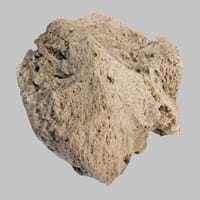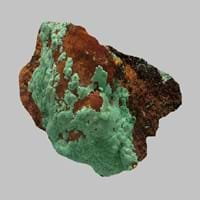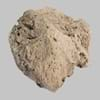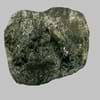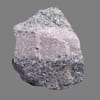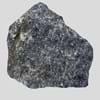Definition
Pumice is a volcanic rock that consists of highly vesicular rough textured volcanic glass, which may or may not contain crystals
Gossan is intensely oxidized, weathered or decomposed rock, usually the upper and exposed part of an ore deposit or mineral vein.
Discoverer
Unknown
Cornish Gossen
Etymology
From Old French pomis, from a Latin dialect variant of pumex
From Cornish gossen from gos, blood from Old Cornish guit
Class
Igneous Rocks
Metamorphic Rocks
Sub-Class
Durable Rock, Medium Hardness Rock
Durable Rock, Medium Hardness Rock
Group
Volcanic
Not Applicable
Other Categories
Fine Grained Rock, Opaque Rock
Fine Grained Rock, Medium Grained Rock, Opaque Rock
Texture
Vesicular
Rough, Sandy
Color
Beige, Colourless, Grey, Light Green, Light Grey, Pink, White, Yellow- grey
Brown, Brown- Black, Gold, Green, Rust
Durability
Durable
Durable
Scratch Resistant
Yes
Yes
Appearance
Vesicular
Dull and Banded
Interior Uses
Decorative Aggregates, Flooring, Homes, Interior Decoration
Countertops, Decorative Aggregates, Interior Decoration
Exterior Uses
As Building Stone, As Facing Stone, Garden Decoration, Paving Stone
As Building Stone, As Facing Stone, Paving Stone, Garden Decoration, Office Buildings
Other Architectural Uses
Curbing, Powder
Curbing
Construction Industry
As Dimension Stone, Cement Manufacture, for Road Aggregate, In landscaping and horticulture, Making natural cement, Production of lightweight concrete blocks
As Dimension Stone, Cement Manufacture, Construction Aggregate, for Road Aggregate
Medical Industry
As an abrasive in skin exfoliating products, In Chemical and Pharmaceutical Industry, Medicines and Cosmetics
Not Yet Used
Antiquity Uses
Artifacts
Artifacts
Commercial Uses
As a traction material on snow-covered roads, As an abrasive in pencil erasers, Fine abrasive used for polishing, Manufacture of Soap, Solvents, Dyes, Plastics and Fibres, Used in aquariums
Cemetery Markers, Commemorative Tablets, Gemstone
Types
Scoria
Translocated gossan and Leakage gossan
Features
Host Rock for Lead
Clasts are smooth to touch, Easily splits into thin plates
Archaeological Significance
Monuments
Not Yet Used
Not Yet Used
Famous Monuments
Not Applicable
Not Applicable
Sculpture
Not Yet Used
Not Yet Used
Famous Sculptures
Not Applicable
Not Applicable
Figurines
Not Yet Used
Not Yet Used
Formation
Pumice rock forms when the magma cools so quickly that atoms in the melt are not able to arrange themselves into a crystalline structure.
Earth movements can cause rocks to be either deeply buried or squeezed and hence the rocks are heated and put under great pressure.
Mineral Content
Aluminum Oxides, Calcite, Carbonate, Iron Oxides, Silica
Apatite, Augite, Biotite, Bronzite, Calcite, Chert, Epidote, Feldspar, Hornblende, Micas, Plagioclase, Pyroxene, Quartz, Sulfides, Zircon
Compound Content
Al, Aluminium Oxide, CaO, Carbon Dioxide, MgO, Silicon Dioxide
Aluminium Oxide, CaO, Fe, FeO, Silicon Dioxide, Sulphur
Types of Metamorphism
Burial Metamorphism, Impact Metamorphism
Not Applicable
Types of Weathering
Biological Weathering, Chemical Weathering, Mechanical Weathering
Not Applicable
Types of Erosion
Chemical Erosion, Coastal Erosion, Glacier Erosion, Sea Erosion, Water Erosion, Wind Erosion
Chemical Erosion, Sea Erosion, Wind Erosion
Grain Size
Fine Grained
Fine to Medium Grained
Fracture
Planar
Conchoidal
Streak
White, Greenish White or Grey
White to Grey
Porosity
Highly Porous
Highly Porous
Compressive Strength
Not Available
Cleavage
Perfect
Not Available
Toughness
3
Not Available
Specific Gravity
2.86
2.0
Transparency
Opaque
Opaque
Density
0.25-0.3 g/cm3
Not Available
Resistance
Impact Resistant, Pressure Resistant
Heat Resistant, Impact Resistant, Pressure Resistant
Deposits in Eastern Continents
Asia
Afghanistan, Indonesia, Japan, Russia
China, India, Indonesia, Russia, Singapore, South Korea
Africa
Ethiopia, Kenya, Tanzania
Cape Verde, Ethiopia, Ghana, South Africa, Western Africa
Europe
Greece, Hungary, Iceland, Italy, Turkey
Albania, France, Germany, Great Britain, United Kingdom
Others
Not Yet Found
Not Yet Found
Deposits in Western Continents
North America
Bahamas, Barbados, Canada, Costa Rica, Cuba, Jamaica, Mexico, USA
Canada, USA
South America
Argentina, Chile, Ecuador, Peru
Brazil, Colombia, Ecuador
Deposits in Oceania Continent
Australia
New Zealand, Western Australia
New South Wales, South Australia, Western Australia
Pumice vs Gossan Characteristics
Though some rocks look identical, they have certain characteristics which distinguish them from others. Characteristics of rocks include texture, appearance, color, fracture, streak, hardness etc. Pumice vs Gossan characteristics assist us to distinguish and recognize rocks. Also you can check about Properties of Pumice and Properties of Gossan. Learn more about Pumice vs Gossan in the next section. The interior uses of Pumice include Decorative aggregates, Flooring, Homes and Interior decoration whereas the interior uses of Gossan include Countertops, Decorative aggregates and Interior decoration. Due to some exceptional properties of Pumice and Gossan, they have various applications in construction industry. The uses of Pumice in construction industry include As dimension stone, Cement manufacture, For road aggregate, In landscaping and horticulture, Making natural cement, Production of lightweight concrete blocks and that of Gossan include As dimension stone, Cement manufacture, Construction aggregate, For road aggregate.
More about Pumice and Gossan
Here you can know more about Pumice and Gossan. The life cycle of a rock consists of formation of rock, composition of rock and transformation of rock. The composition of Pumice and Gossan consists of mineral content and compound content. The mineral content of Pumice includes Aluminum Oxides, Calcite, Carbonate, Iron Oxides, Silica and mineral content of Gossan includes Apatite, Augite, Biotite, Bronzite, Calcite, Chert, Epidote, Feldspar, Hornblende, Micas, Plagioclase, Pyroxene, Quartz, Sulfides, Zircon. You can also check out the list of all Igneous Rocks. When we have to compare Pumice vs Gossan, the texture, color and appearance plays an important role in determining the type of rock. Pumice is available in beige, colourless, grey, light green, light grey, pink, white, yellow- grey colors whereas, Gossan is available in brown, brown- black, gold, green, rust colors. Appearance of Pumice is Vesicular and that of Gossan is Dull and Banded. Properties of rock is another aspect for Pumice vs Gossan. The hardness of Pumice is 6 and that of Gossan is 4-5. The types of Pumice are Scoria whereas types of Gossan are Translocated gossan and Leakage gossan. Streak of rock is the color of powder produced when it is dragged across an unweathered surface. The streak of Pumice is white, greenish white or grey while that of Gossan is white to grey. The specific heat capacity of Pumice is 0.87 kJ/Kg K and that of Gossan is 0.24 kJ/Kg K. Depending on the properties like hardness, toughness, specific heat capacity, porosity etc., rocks are resistant to heat, wear, impact, etc.Pumice is impact resistant, pressure resistant whereas Gossan is heat resistant, impact resistant, pressure resistant.
